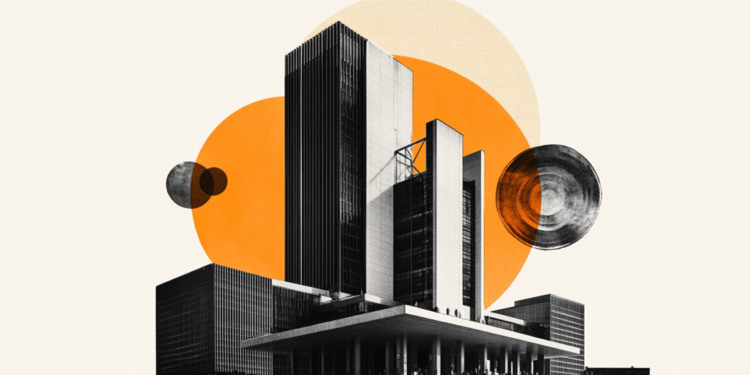Former special secretary of Culture Mario Frias announced on Tuesday night (12) that he was discharged from the Santa Lúcia hospital, in Brasília, after eight days in the hospital because of a heart attack.
In a post on Twitter, Frias posed next to his children and wife and thanked him for the support he received.
“Thank God I was discharged today. I’m already at home with my family. These were very difficult days, of pain and a lot of agony. Thank you for all the prayers and messages throughout these days. I am very grateful for all the affection I have always received, for all the support and care”, he wrote.
Thank God I was discharged today. I’m already at home with my family. These were very difficult days, of pain and a lot of agony.
I thank you for all the prayers and messages throughout these days, I am very grateful for all the affection I have always received, for all the support and all the care. pic.twitter.com/RulSxvrXSk
— MarioFrias (@mfriasoficial) July 12, 2022
Acute myocardial infarction
Mario Frias was hospitalized on Monday night (4) due to an acute myocardial infarction. The information was released on Tuesday (5) in a bulletin issued by the Santa Lucia hospital in Brasília.
According to the note, the former secretary underwent a procedure of catheterization and angioplasty with thrombus removal.
In December 2020, Frias was hospitalized due to a heart attack. On that occasion, two stents were placed after the catheterization procedure. Understand here why some people may have more than one heart attack in their lifetime.
“In view of this fact, unfortunately I will not attend the agendas and commitments made for the next few days. Thank you for your understanding and I count on everyone’s prayers. Stay with God and see you soon”, said Frias in a post on Twitter.
Myocardial infarction, or heart attack, happens due to the death of cells in a region of the heart muscle caused by the formation of a clot that stops blood flow.
According to the Ministry of Health, the main cause of a heart attack is atherosclerosis, a disease in which fatty plaques accumulate inside the coronary arteries, causing obstruction. In most cases, infarction occurs when one of these plaques ruptures, leading to clot formation and interruption of blood flow.
Risk factors
The main risk factors for developing a heart attack are smoking and excess cholesterol. Behavior favors the formation and accumulation of fat plaques, as well as contributing to the development of hypertension, obesity, stress, depression and diabetes.
According to cardiologist Carlos Rassi, from the Hospital Sírio-Libanês in Brasília and professor of Cardiology at the University of Brasília (UnB), people who have already suffered a heart attack have increased chances of new episodes.
“Every patient who has a heart attack will be for the rest of his life a patient at very high risk for having new events of heart attack. Atherosclerotic disease, developed by the sum of several factors such as advanced age, diabetes, hypertension, family history, smoking, sedentary lifestyle, obesity and stress, normally occurs in several places, not only in a specific vessel such as the arteries of the heart”, explains the author. doctor.
The specialist says that the lack of care for other health conditions, such as obesity, diabetes and hypertension, and the absence of changing lifestyle habits, such as maintaining smoking and a sedentary lifestyle, also increase the likelihood of new heart attacks. .
“If you don’t treat your hypertension or diabetes, if you don’t stop smoking, if you don’t improve your eating habits and physical activity, all this makes the disease continue to develop. Even doing everything right, you can develop other episodes. The treatment reduces the risks, increases the quality of life, but does not eliminate the risks”, he warns.
Cardiologist Helio José Castello Junior, coordinator of Hemodynamics at the Hospital Alemão Oswaldo Cruz, in São Paulo, says that a heart attack requires immediate medical care. Treatment is surgical or medication, with the use of anticoagulants, for example.
“The individual who starts to have any of the normal symptoms of a heart attack, such as chest pain, sweating, dizziness and shortness of breath, the sooner they go to the hospital and if they receive the ideal care to unclog this artery with catheterization and angioplasty , which is stent implantation, it will drop the risk of death from 35 to 40% to below 5%”, says the expert.
In addition to regular physical exercise, proper nutrition and avoiding smoking, the prevention of diseases such as atherosclerosis, diabetes and obesity help to prevent clogged arteries and heart attacks.
Signs and symptoms of heart attack
Regular monitoring of cardiac conditions allows early identification of possible vascular changes. Rassi recommends that people who have already suffered a heart attack perform medical follow-up once or twice a year and pay attention to symptoms.
Although the infarction can happen suddenly, some patients may have signs that include pain or discomfort in the chest area that can affect the back, face, left arm and, more rarely, the right arm .
The discomfort is usually intense and prolonged, accompanied by feeling of heaviness or tightness in the chest . These signs can be accompanied by cold sweat, paleness, shortness of breath, and feeling faint . In the elderly, the main symptom may be shortness of breath.
“There are patients who may have conditions that previously warn of a heart attack, such as chest pain, shortness of breath, tiredness from efforts that I didn’t have before. All of these are signs that we should be aware of. In these situations, look for a cardiologist to be evaluated”, says Rassi.
Source: CNN Brasil







